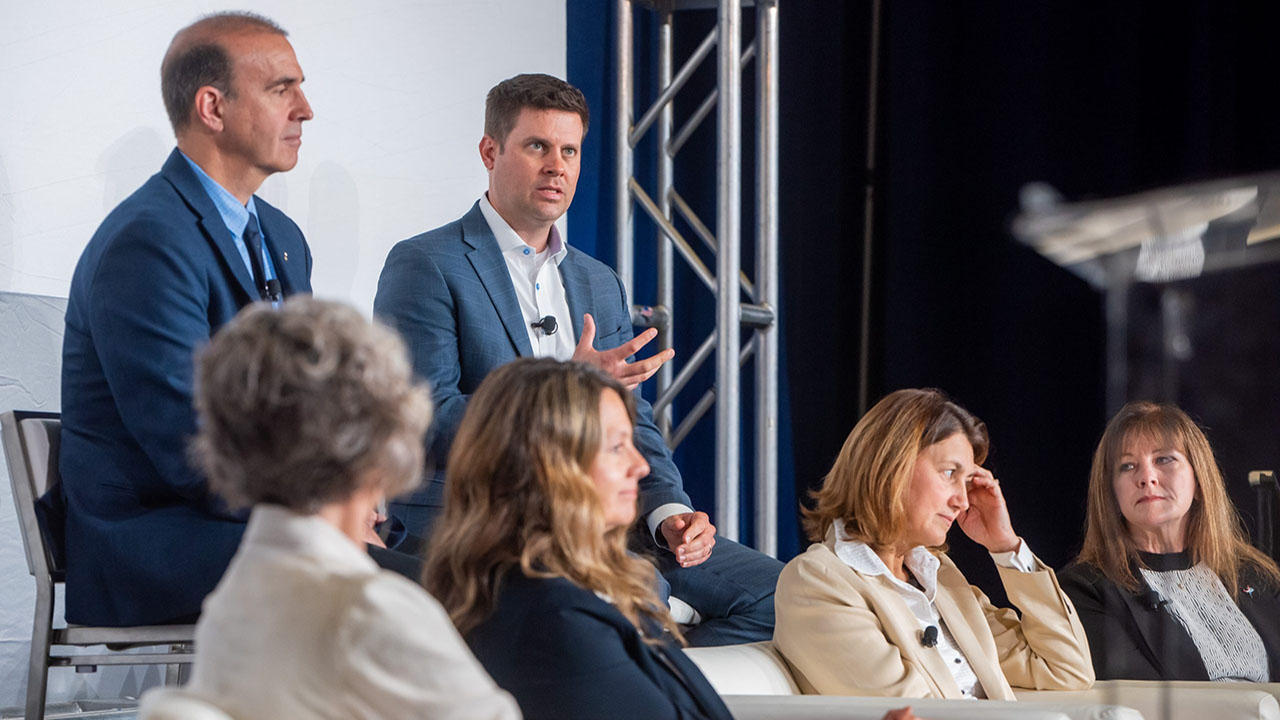New Generation of Commercial Space Stations in LEO Discussed at ISSRDC

ISSRDC 2022 Commercial LEO Destinations: Exploring the Future of Research in Space panel session
August 18, 2022 • By Stephenie Livingston, Staff Writer
This piece is part of our ISS360 reflections series highlighting the 2022 International Space Station Research and Development Conference(Abbreviation: ISSRDC) The only conference dedicated exclusively to showcasing how the International Space Station is advancing science and technology and enabling a robust and sustainable market in LEO. This annual conference brings together leaders from the commercial sector, U.S. government agencies, and academic communities to foster innovation and discovery onboard the space station. ISSRDC is hosted by the Center for the Advancement of Science in Space, manager of the ISS National Lab; NASA; and the American Astronautical Society..
A group of commercial space industry leaders discussed the path to develop a new generation of space stations in low Earth orbit(Abbreviation: LEO) The orbit around the Earth that extends up to an altitude of 2,000 km (1,200 miles) from Earth’s surface. The International Space Station’s orbit is in LEO, at an altitude of approximately 250 miles. (LEO) at the 2022 International Space Station Research and Development Conference (ISSRDC). The panel session included representatives from Axiom Space, Nanoracks, Northrop Grumman, and Sierra Space.
The companies are in the first phase of platform design, which involves creating plans for space stations and exploring the needs of potential customers that will benefit from space-based research and development. NASANational Aeronautics and Space Administration has competitively awarded Axiom Space, Blue Origin, Nanoracks, and Northrop Grumman opportunities to design free-flying commercial destinations in LEO.
Multiple space stations may eventually exist in LEO, each with its unique capabilities that NASA and other users can leverage once the International Space Station (ISSInternational Space Station) is retired, said Angela Hart, program manager for the Commercial LEO Development Office at NASA. Right now, NASA is determining what is needed from a space station post ISS, Hart said. “We don’t necessarily want it to look like the ISS. We want to leave it very open-ended,” she said, adding that NASA wants the commercial industry to consider what kind of space stations are in high demand by markets.
Panelists agreed that the ISS has served as a stepping stone for new commercial LEO destinations, from the vehicles used to deliver payloads to operational procedures. Designers of new commercial destinations are working to make space-based research, technological development, and manufacturing more accessible than ever before and in ways that turn profits and fuel the economy on Earth and in LEO.
“If commercial space is not profitable, it won’t be sustained,” said Janet Kavandi, president of Sierra Space Corporation. It is essential for the space industry to provide the space and access where diverse customers can do previously impossible things, she said.
“Building a space station is easy—building the business is the hard part,” said Rick Mastracchio, director of strategy and business development at Northrop Grumman.
Watch the full ISSRDC panel discussion with commercial space industry leaders in the recorded session. ISSRDC is an annual event hosted by the Center for the Advancement of Science in Space, Inc. (CASIS(Abbreviation: CASIS™) The nonprofit organization that manages the ISS National Lab, which receives at least 50 percent of the U.S. research allocation on the International Space Station to facilitate research that benefits humanity (NASA manages the other 50% and focuses on research for space exploration purposes).), manager of the ISS National Laboratory; NASA; and the American Astronautical Society (AAS). Learn more about how ISS National Lab is driving a robust economy in LEO on our website.